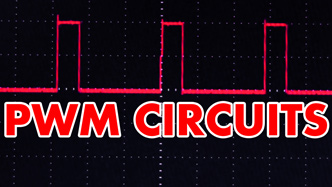PWM circuits are fun. You can use them to dim LEDs, control the speed of fans and motors, control the power going to a thermoelectric cooler, or control the power going to pretty much anything you want. Just make sure that you don’t exceed the maximum voltage rating of your device. The video explains it […]
Read MoreCategory: Intermediate Tutorials

This video shows different ways you can protect your circuit from backwards power connections. Diodes, schottky diodes and P channel MOSFETs are discussed.
Read More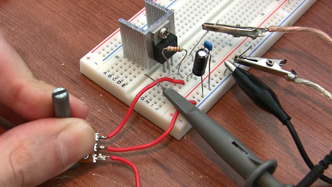
A tutorial on the LM317 voltage regulator. Shows you how to make a 1.25 to 25V adjustable voltage supply, or choose any other output voltage you want. An example of a fan speed controller is shown. This video builds on material covered in the fixed voltage regulator tutorial so you should check that out if […]
Read More
This video covers the basics of low pass filters – how they affect signals, and how to design your own. By the end of the video you’ll know how to filter out high frequencies, which may prove useful when designing subwoofer crossovers etc. They are also handy for smoothing voltage ripple out too. You’ll also […]
Read More
This video builds upon the basics I covered with my low pass filter tutorial, so make sure you have seen that video first. This video shows you how high pass filters affect sine waves and square waves of different frequencies, and compares the bode plots of high and low pass filters. By the end of […]
Read More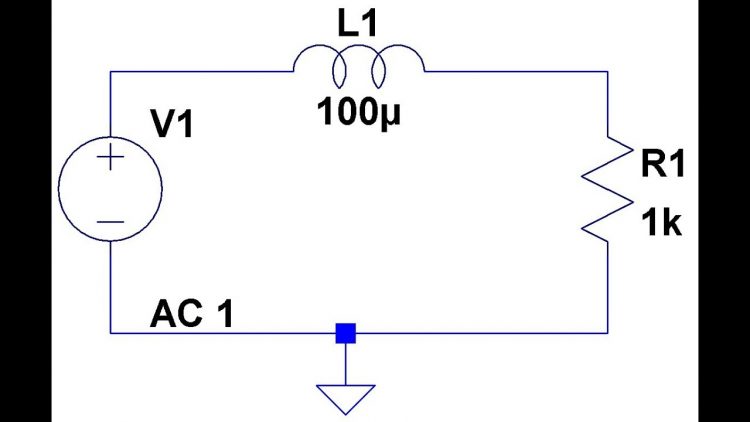
This video shows how you can use RL filters to filter out high frequency signals. An example audio crossover circuit for a woofer speaker is given.
Read More
Comparators are a very handy circuit block that everyone should know. The basic idea is that you have a reference voltage, and as your input goes above or below that voltage, the output of the comparator goes high or low. In the video I give an example clapper circuit that toggles an LED on and […]
Read More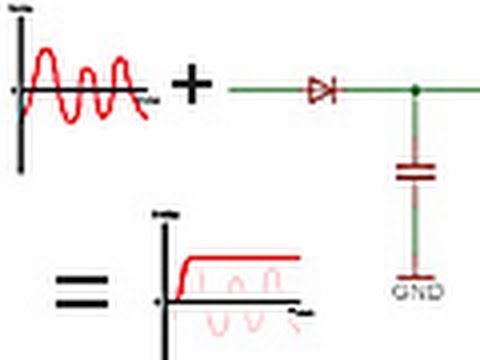
Peak detectors are used when you have a rapidly changing AC input signal, and you want to obtain the peak voltage the signal reaches. Peak detectors are really simple to make – just a diode and a capacitor in their simplest form. In the video I give an example where I use a peak detector […]
Read More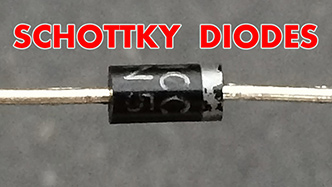
A tutorial covering the advantages and disadvantages of schottky diodes over regular silicon diodes including forward voltage, efficiency, leakage current and recovery time issues.
Read More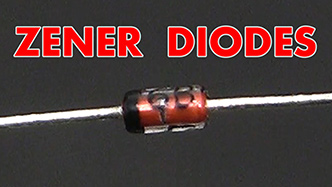
A tutorial on zener diodes and how to use them as voltage clamps, voltage regulators, and how to create audio distortion circuits.
Read More
There are many different types of rechargeable battery chemistries out there. Li-Polymer, NiCd, NiMH, LiFePO4, lead acid and more. In the first half of this video I give a brief overview of the basic pros and cons of each type of rechargeable battery chemistry and help you choose a battery for your project. Then in […]
Read More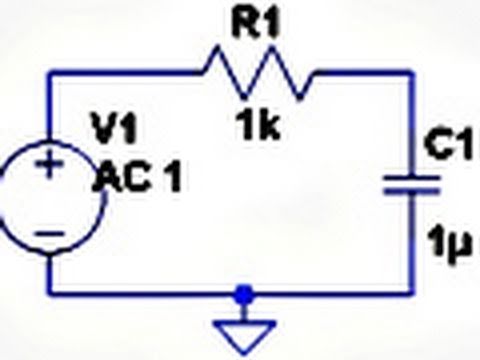
Circuit simulation can save you a lot of grief when designing advanced circuits. Instead of building something then wondering why it doesn’t work, a simulator can speed up the debugging process by letting you quickly change component values to see how the circuit responds. LTSpice IV is a freely available circuit simulation package from Linear […]
Read More
An overview of constant current sources and how to build one out of an LM317. Examples are given where you can use a constant current source to drive a string of LEDs or a laser diode.
Read More
When switching inductive loads you have to put a diode in antiparallel with the load, else you risk blowing up your transistor due to inductive spiking. This video explains it all. Bonus: Here is an online circuit simulator that you can use to simulate inductive spiking behaviour.
Read More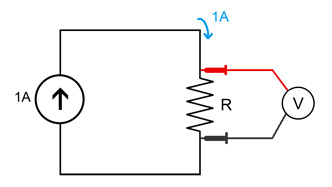
Most multimeters will allow you to measure resistances in the 1 ohm to megahohm range with a high degree of accuracy. But they are very inaccurate at measuring resistances in the milliohm range. The multimeter’s cable and connector resistances may be more than the resistance you are trying to measure. This video will show you […]
Read More
